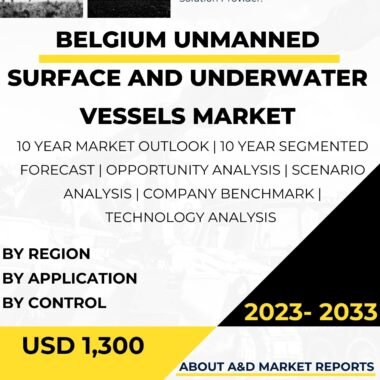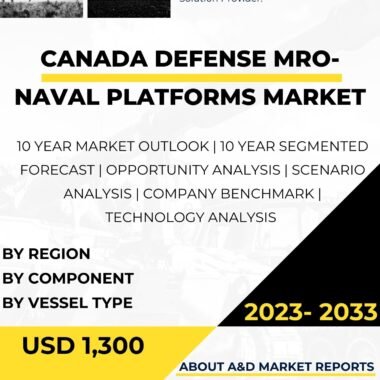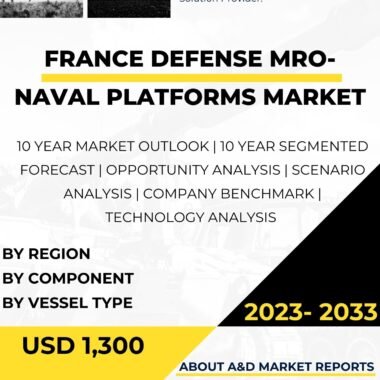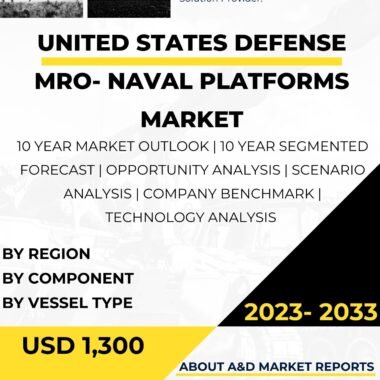Description
Unmanned surface and underwater vessels, also known as Unmanned Surface Vehicles (USVs) and Unmanned Underwater Vehicles (UUVs), have emerged as critical assets in Canada’s maritime operations. These advanced autonomous systems offer versatility, endurance, and efficiency in various military and civilian applications, providing valuable contributions to Canada’s maritime security, surveillance, environmental monitoring, and research efforts. This article explores the importance of unmanned surface and underwater vessels in Canada, their history, types, technology, challenges, and their role in enhancing the country’s maritime capabilities.
The use of unmanned surface and underwater vessels in Canada can be traced back to the early days of robotic and autonomous systems. In the latter half of the 20th century, research and development efforts in robotics and remote control technologies laid the groundwork for the emergence of unmanned maritime vehicles.
Canada’s interest in unmanned maritime vehicles grew as their potential benefits for military and civilian applications became evident. Early unmanned surface and underwater vessels were primarily used for research and development, exploring the feasibility and applications of autonomous navigation in maritime environments.
As technology advanced and demonstrated its capabilities, unmanned surface and underwater vessels found practical applications in various sectors. In the military domain, unmanned vessels offered increased surveillance capabilities, reduced risks to human operators, and extended endurance for maritime missions.
In recent years, the Canadian Armed Forces (CAF) and various civilian organizations have intensified their focus on the development and integration of advanced unmanned surface and underwater vessels. These autonomous systems contribute to Canada’s maritime domain awareness, border security, environmental monitoring, and research efforts.
The use of unmanned surface and underwater vessels extends beyond military applications. In civilian sectors, these vessels are employed for marine research, oceanographic studies, underwater exploration, seabed mapping, and environmental monitoring.
Unmanned surface and underwater vessels come in various types and configurations, each optimized for specific tasks and operational environments.
Unmanned Surface Vehicles (USVs) used in Canada include the Saildrone Surveyor, the Liquid Robotics Wave Glider, and the Autonomous Surface Vehicle (ASV).
The Saildrone Surveyor is a cutting-edge USV designed for oceanographic research and marine data collection. Equipped with a range of sensors and scientific instruments, the Surveyor can autonomously navigate vast ocean expanses, gathering valuable environmental data to support climate research and marine conservation efforts.
The Liquid Robotics Wave Glider is a unique USV that harnesses wave energy for propulsion, eliminating the need for conventional fuel or batteries. The Wave Glider is employed for a range of missions, including environmental monitoring, weather data collection, and marine surveillance.
The Autonomous Surface Vehicle (ASV) is a versatile USV designed for a variety of applications, including hydrographic surveying, seabed mapping, and marine research. Equipped with advanced sonar and sensor systems, the ASV can conduct precise and efficient underwater surveys.
Unmanned Underwater Vehicles (UUVs) used in Canada include the Remus 100, the Bluefin-9, and the HUGIN Autonomous Underwater Vehicle.
The Remus 100 is a compact UUV used for underwater surveys, mine countermeasures, and environmental monitoring. Its size and maneuverability make it suitable for operating in challenging and confined underwater spaces.
The Bluefin-9 is a modular UUV designed for a range of underwater missions, including mine countermeasures, reconnaissance, and underwater mapping. The Bluefin-9’s modular design allows for easy reconfiguration to adapt to various operational requirements.
The HUGIN Autonomous Underwater Vehicle is a state-of-the-art UUV employed for deep-sea exploration, seabed mapping, and hydrographic surveys. Equipped with advanced sensor suites and long-endurance capabilities, the HUGIN UUV supports marine research and scientific expeditions in remote and deep-sea regions.
Unmanned surface and underwater vessels rely on advanced technologies to operate autonomously and execute their missions effectively. These technologies include Global Positioning System (GPS) navigation, inertial navigation systems, and obstacle avoidance systems to ensure precise and safe navigation.
Payloads carried by unmanned surface and underwater vessels include sonar systems, cameras, underwater sensors, and communication equipment. These payloads allow the vessels to collect data, conduct surveys, and relay information back to operators or command centers in real-time.
Autonomous capabilities are a critical aspect of unmanned surface and underwater vessels, enabling them to execute missions with minimal human intervention. Advanced algorithms and artificial intelligence enable these vessels to plan and adapt their routes, avoid obstacles, and make decisions based on data collected from their surroundings.
Challenges associated with unmanned surface and underwater vessels in Canada relate to ensuring their reliable and safe operation in diverse maritime conditions and environments. These vessels must be capable of withstanding harsh weather conditions, rough seas, and varying depths while maintaining their performance and effectiveness.
To address these challenges, unmanned surface and underwater vessels undergo rigorous testing and evaluation in different operational scenarios. The CAF and civilian operators collaborate with industry partners and research institutions to develop and integrate robust unmanned systems suitable for Canada’s unique maritime requirements.
Another challenge pertains to the integration of unmanned surface and underwater vessels into existing maritime traffic and regulatory frameworks. As unmanned vessels become more prevalent, effective management of maritime traffic is crucial to avoid conflicts with manned vessels and ensure the safety and efficiency of maritime operations.
Canada actively invests in research and development efforts to address these challenges and improve the capabilities of unmanned surface and underwater vessels. The country’s commitment to leveraging unmanned systems in its maritime operations underscores its dedication to enhancing maritime security, environmental monitoring, and marine research efforts.
The CAF prioritizes training and proficiency in operating unmanned surface and underwater vessels. Personnel involved in the operation and maintenance of these systems undergo specialized training to ensure effective and safe deployment in various operational contexts.
Civilian operators also receive training and certification to operate unmanned surface and underwater vessels legally and responsibly. Compliance with maritime regulations and safety standards is crucial to ensure the safe and ethical use of these systems in civilian sectors.
In conclusion, unmanned surface and underwater vessels have become invaluable assets in Canada’s maritime operations, supporting military missions, environmental monitoring, and scientific research. These advanced autonomous systems offer enhanced endurance, versatility, and efficiency in diverse maritime environments.
The integration of unmanned surface and underwater vessels into the CAF’s operations enhances Canada’s maritime domain awareness, border security, and operational capabilities. In civilian sectors, these vessels contribute to marine research, environmental monitoring, and underwater exploration, promoting sustainable marine conservation and resource management.
As unmanned surface and underwater vessel technology continues to evolve, Canada’s maritime capabilities will continue to benefit from these advanced autonomous systems. Unmanned surface and underwater vessels will remain critical assets in the country’s maritime strategy, ensuring the safe, effective, and sustainable use of Canada’s vast marine territories and resources.




